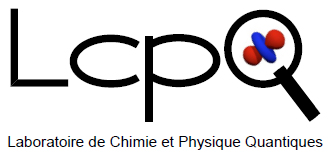Photoemission spectroscopy from the 3-body Green’s function
THEORETICAL PHYSICS

Lab: LCPQ
Duration: NanoX master Internship (8 months part-time in-lab immersion)
5 months full-time internship
6 months full-time internship
Latest starting date: 01/03/2023
Localisation: 118 route de Narbonne, Toulouse
Supervisors:
Arjan Berger arjan.berger@irsamc.ups-tlse.fr
Pina Romaniello pina.romaniello@irsamc.ups-tlse.fr
This research master's degree project could be followed by a PhD
Work package:
Spectroscopy is an important experimental technique to understand the electronic structure of molecules and solids. Many-body perturbation theory (MBPT) based on Green’s functions is an important tool to describe and understand various spectroscopies. Traditionally, MBPT is limited to the one-body Green’s function (G1), which describes the propagation of a single particle, and the two-body Green’s function G2, which describes the simultaneous propagation of two particles. The interaction with all the other particles of the system is hidden in an effective potential called the self-energy which has to be approximated in practice. From G1 and G2 we in principle describe photoemission (see figure) and absorption spectroscopy. However, accurate approximations to the self-energy are needed to accurately describe all the physics. In particular, so-called satellite features are difficult to describe in photoemission spectra since they are related to the interaction between a photohole (what
remains after an electron is emitted) and electron-hole pairs. Therefore, we have recently started to study the three-body Green’s function (G3) as the key variable since it describes three particles simultaneously. Therefore, the interaction of a photohole with electron-hole pairs can be treated explicitly and we can use simpler approximations to the self-energy to obtain the photoemission spectrum.
In this project the student will test these ideas on important models for electron correlation such as the uniform electron gas and/or the Hubbard dimer.
References:
[1] Gy. Csanak, H.S. Taylor, and R. Yaris, Advances in Atomic and Molecular Physics, 7, 287 (1971)
[2] G. Strinati, Nuovo Cimento, 11, 1 (1988)
Areas of expertise:
Green functions ; many-body perturbation theory ; electron correlation ; spectroscopy
Required skills for the internship:
A strong background in mathematics is desirable.
It is also an advantage if the candidate has some programming skills.
